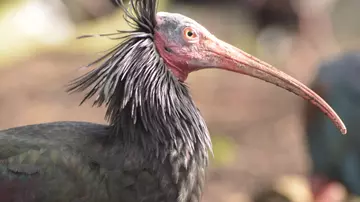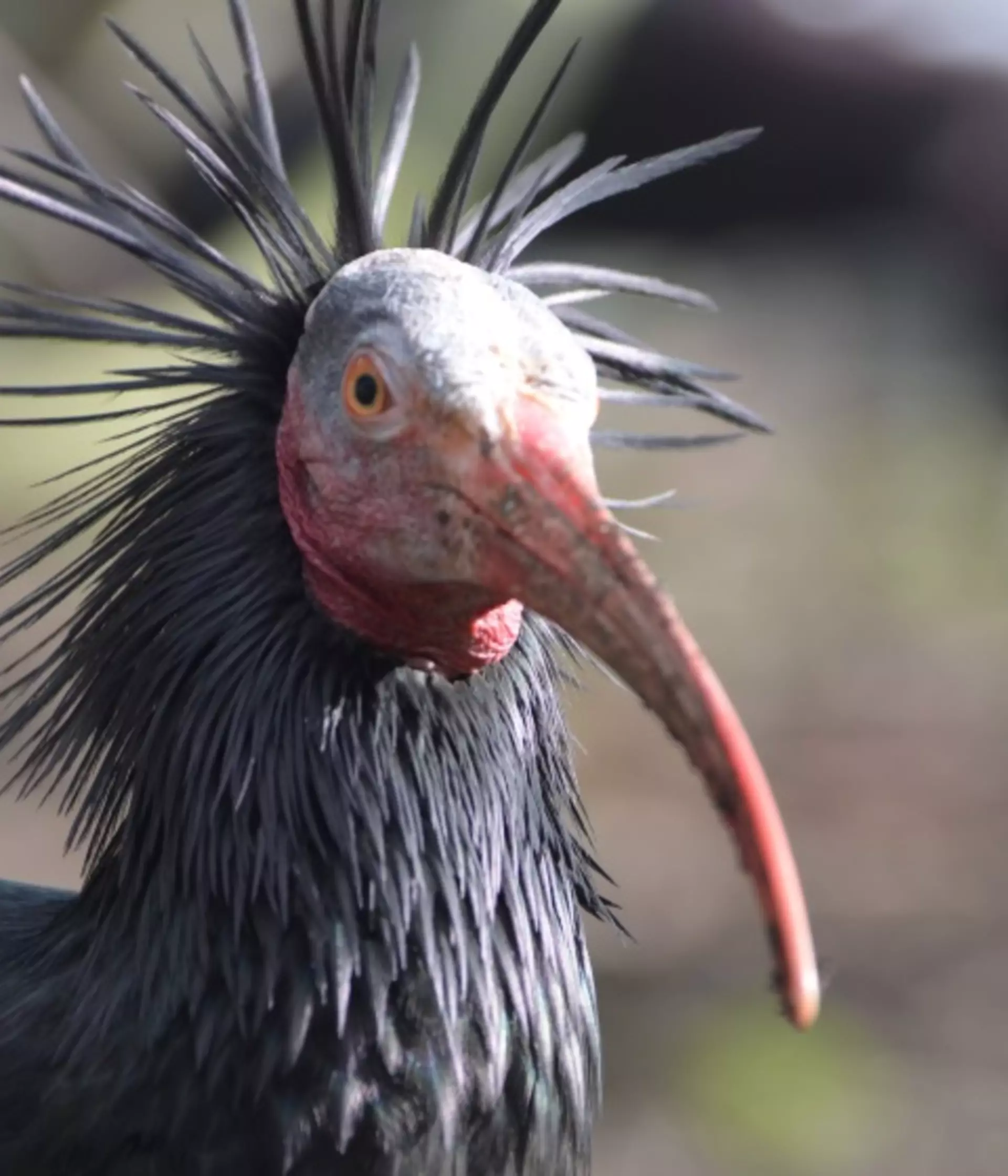
Waldrapp ibis facts
- They breed on cliff edges, where they lay two to three eggs in a stick nest.
- The species recently suffered a long-term decline and now only a wild population of a few hundred exist today.
- Waldrapp ibis fossils found in southern France date back more than 10,000 years.
Our waldrapp ibis reintroduction
What do Waldrapp ibis look like?
The waldrapp ibis is a large bird standing around 80cm tall, covered in black shiny feathers. Unlike other species of ibis bird, its face and head features no feathers and is pale red in colour, along with its downward curving bill and long legs.
What do Waldrapp ibis eat?
They eat a variety of small animals, including lizards and insects.

Waldrapp ibis habitat
This species can typically be found in rocky habitats where there is running water nearby.
Where are Waldrapp ibis from?
Morroco, Spain, Turkey and Austria.
Waldrapp ibis threats
Different colonies of waldrapp ibis face different threats. For example, in Morocco, the species threatened by illegal building work and disturbances close to the cliffs where they breed. Meanwhile, hunting is a major threat to the extremely small population of waldrapp ibis that remains in Syria.
